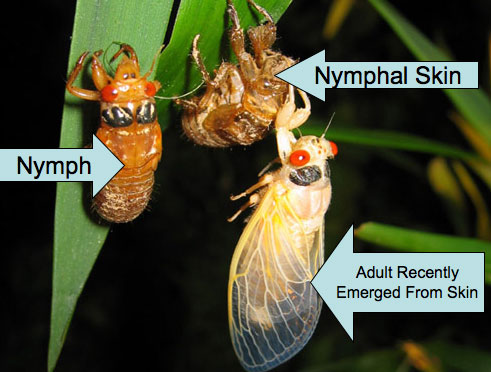

Gene Kritsky working with the Center for IT Engagement at Mount St. Once the photo is verified, it will be posted to the live map.

Take a photograph of a periodical cicada and submit it to Cicada Safari.
#Are cicadas blind download
If you want to help map the 2021 emergence of Brood X, download the free app from the Apple app store or Google play. The three species congregate on different trees and have a different male song. Brood X includes three species : Magicicada septendecim, Magicicada cassinii and Magicicada septendecula. There are over 190 varieties (including species and subspecies) species of cicada in North America, but only the seven Magicicada species have developed into periodical emergences. Their presence was recorded by settlers and. The empty exoskeletons and carcasses feed the forest and the nymphs underground help aerate the soil.Ĭicadas have been around for about five million years.

Many Native American Onondaga people in New York state believe that their ancestors ate them to survive after their crops had been burned and their villages destroyed, some eat them now sauteed in butter following Onondaga tradition. Some people say they are good to eat ( cooked, of course) and the description of flavor ranges from white asparagus to shrimp.

Because there are so many cicadas in a brood, the numbers are not affected by being consumed by other animals and at a certain point, the animals appear to stop eating them. Some people who fly fish use them as bait. They do not often affect annuals or perennials (unless they are woody) – they may use them while shedding their shell or allowing their bodies and wings to harden.Ĭicadas are eaten by birds, raccoons, dogs, opossums, skunks, and pretty much all other woodland creatures. Pesticides are of no use against periodical cicadas, so the only recourse is to wrap a small tree or woody vine in netting with mesh one centimeter or smaller to keep the cicadas from laying eggs. There is usually little long-term damage, rather it’s a sort of natural pruning. Healthy mature trees and shrubs may have flagging – where the ends of branches may die. Only young or newly planted trees with branches the diameter of your little finger, where females lay their eggs, are likely to be seriously injured. They arrive in large numbers and can be annoying if you live near the epicenter of a brood - the noise can be loud enough to damage your hearing, they fly into and land on you, and they fly into your windshield. This feeding does no harm to the trees or plants.Ĭicadas do not bite or sting. The eggs hatch in six to seven weeks and the tiny nymphs drop to the ground and tunnel until they reach tree or plant roots that they can feed on for the next 17 years. They make a line of 5 to 20 slits in tender branches, where they lay 200-400 eggs. Female cicadas are what may cause damage to young trees or shrubs. There are many good pictures, maps and videos of cicadas through the lifecycle available online at Cicada Mania, Cicada Safari, and National Geographic. Photo: Pennsylvania Dept of Conservation and Natural Resources - Forestry,


 0 kommentar(er)
0 kommentar(er)
